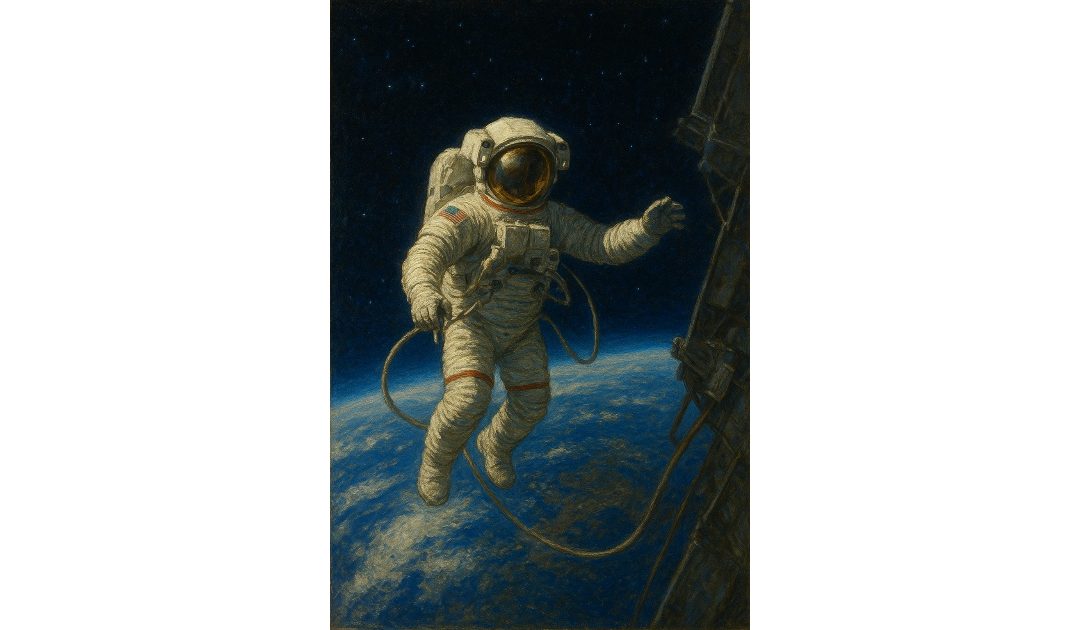The events that jump out for me on the 11th of October concern space flight. On this day in 1968 NASA launched Apollo 7, the first successful crewed Apollo mission. Also on the 11th of October, but in 1984, Kathryn D. Sullivan became the first American woman to perform a space walk.
The Apollo space program, spearheaded by NASA in the 1960s and early 1970s, was a monumental chapter in human history, marking mankind’s first ventures beyond Earth to the Moon. Conceived during the height of the Cold War, Apollo was not just a scientific endeavour but also a powerful symbol of technological prowess and national pride, particularly amidst the fierce space race with the Soviet Union.
Announced by President John F. Kennedy in 1961, the program aimed to land an American astronaut on the Moon and return them safely to Earth before the decade’s end. This ambitious goal catalysed rapid advancements in aerospace technology, engineering, and scientific understanding. The program comprised a series of missions, from uncrewed test flights to manned expeditions, each building on the lessons of its predecessors.
Apollo 11, launched on the 16th of July, 1969, achieved the iconic milestone when astronauts Neil Armstrong and Buzz Aldrin set foot on the lunar surface, while Michael Collins orbited above in the command module. Armstrongs legendary words, “That’s one small step for man, one giant leap for mankind,” encapsulated the profound significance of the achievement.
Following Apollo 11, subsequent missions such as Apollo 12, 14, 15, 16, and 17 continued lunar exploration, conducting scientific experiments, collecting rock samples, and expanding our understanding of the Moon’s geology. Each mission refined landing techniques, extended extravehicular activities, and introduced technological innovations like the lunar rover, first used in Apollo 15.
However, the program was not without its challenges and tragedies. The Apollo 1 disaster in 1967 claimed the lives of astronauts Gus Grissom, Ed White, and Roger B. Chaffee during a pre-flight test, highlighting the inherent risks of space travel and prompting rigorous safety overhauls. I have posted before about Apollo 13 and the incredible achievement of returning the crew safely to Earth after an explosion in the service module.
Budget constraints and shifting political priorities eventually led to Apollo’s conclusion with Apollo 17 in December 1972. Despite its end, the program left an indelible legacy. It demonstrated the potential of human ingenuity, fostered international collaboration, and inspired generations to pursue careers in science and engineering.
Kathryn D. Sullivan, an esteemed American geologist and astronaut become the first American woman to perform a spacewalk. This monumental event took place during the Space Shuttle Challenger’s STS-41-G mission, marking a significant milestone in NASA’s space exploration history.
Sullivan’s spacewalk, officially termed an Extravehicular Activity (EVA), was conducted alongside fellow astronaut David Leestma. The EVA lasted approximately 3 hours and 29 minutes. Their primary objective was to demonstrate a procedure critical for future space missions: the ability to refuel satellites in orbit. To achieve this, Sullivan and Leestma tested the Orbital Refueling System (ORS), showcasing techniques that could extend the operational life of satellites, thereby reducing costs and enhancing the sustainability of space assets.
During the EVA, Sullivan manoeuvred in the microgravity environment outside the Challenger, tethered securely to prevent drifting into space. Her tasks required meticulous precision and coordination, as she handled specialised equipment designed for the refuelling demonstration. Despite the inherent risks and the complexity of working in the vacuum of space, Sullivan executed her duties with remarkable skill and composure.
This spacewalk not only highlighted Sullivan’s technical expertise but also symbolised the increasing role of women in space exploration. Her achievement paved the way for future female astronauts to engage in EVAs, contributing to a more inclusive narrative in the history of spaceflight.

